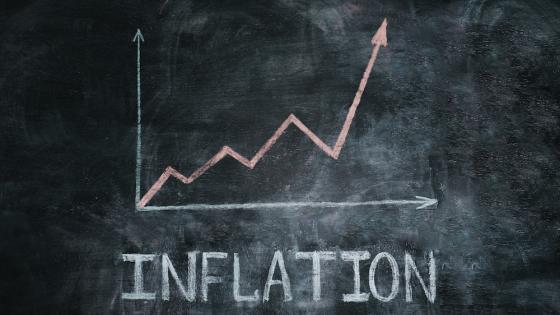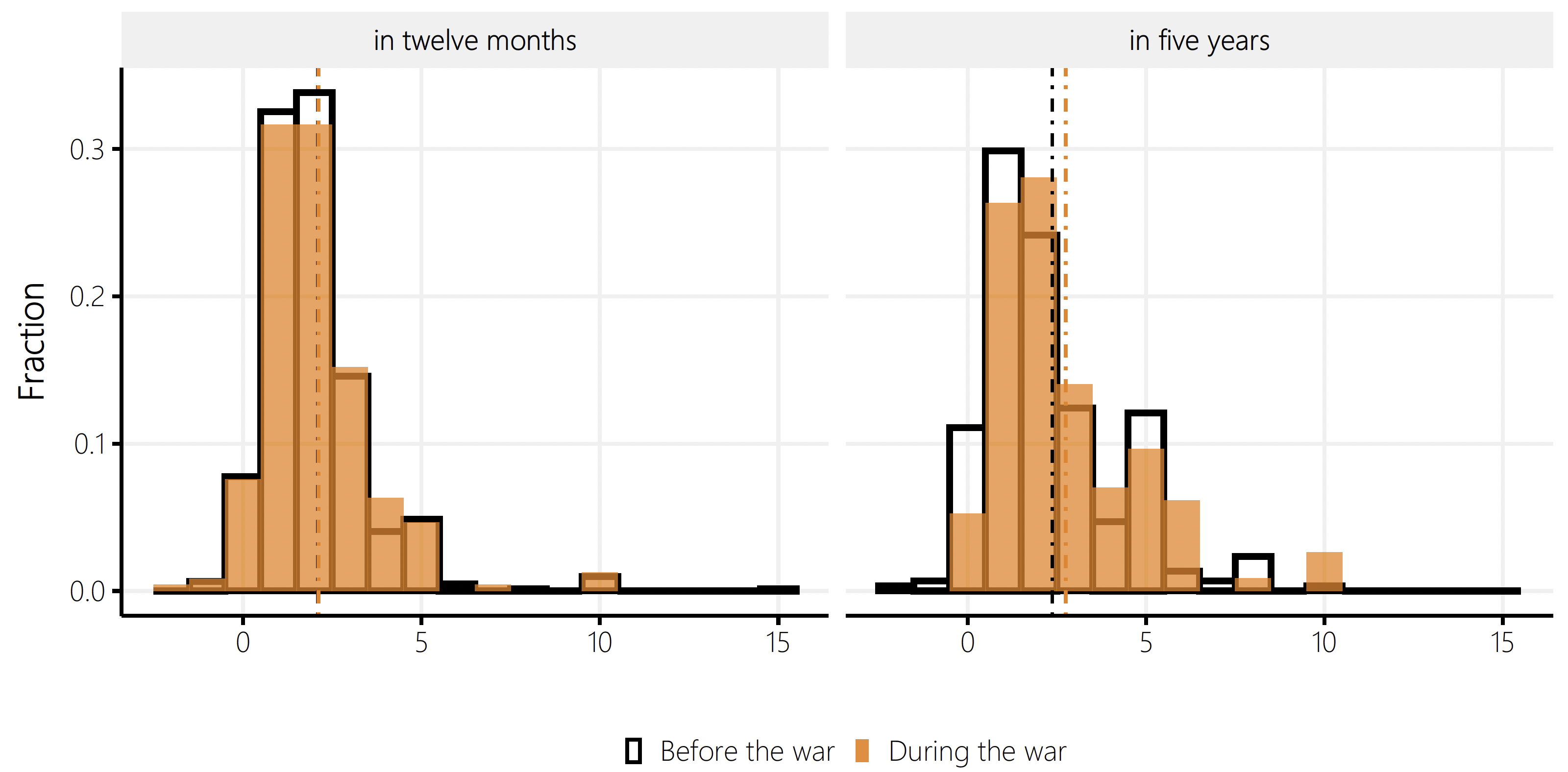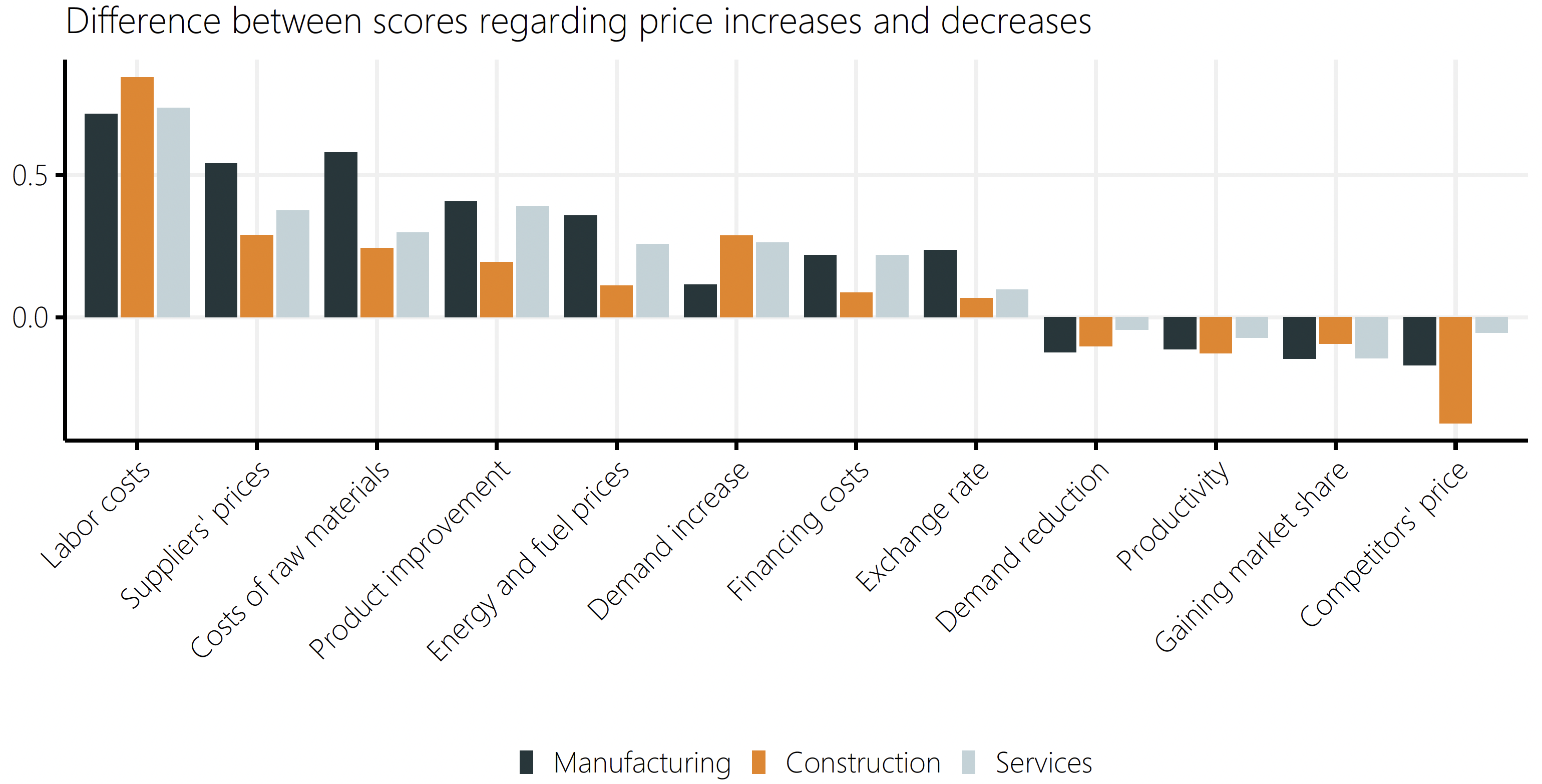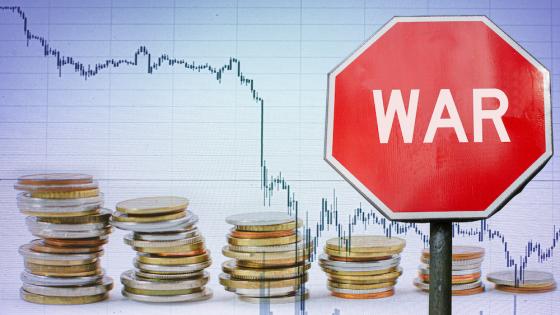Inflation continues to rise in many countries. Until recently, central banks such as the ECB or the Swiss National Bank considered the current rise in inflation to be temporary, albeit more persistent than expected. They attributed the elevated inflation rates to base effects, supply bottlenecks, and demand shifts, all related to the pandemic, and expected these transitory factors to diminish over the course of the year. As long as long-term inflation expectations remained anchored, underlying inflation was projected to be stable and close to central bank targets.
However, the Russian invasion of Ukraine and the resulting economic disruptions could fundamentally overhaul this assessment. For the global economy, Russia and Ukraine are important suppliers of raw materials such as energy, metals, and agricultural products. The war has called into question the supply of these resources and accelerated their price development. There are concerns that a further increase in the price of these input factors could translate into higher operating and manufacturing costs, which in turn translates into higher prices and permanently higher inflation expectations (D’Acunto and Weber 2022). This is because oil shocks are historically known to fuel inflation expectations and dis-anchor the expectations of both consumers and price setters (Coibion and Gorodnichenko 2015, Coibion et al. 2018).
To investigate whether the Russian invasion of Ukraine has affected firms’ inflation expectations, I use data from a special survey of Swiss companies conducted by the KOF Swiss Economic Institute at ETH Zurich. The companies surveyed include companies from all economic sectors in Switzerland, excluding agriculture. As part of this survey, the companies were asked how high they think the annual inflation rate for the consumer price index in Switzerland would be in the next twelve months (short term) and five years (long term). There were no answer options restricting firms’ assessments in answering these quantitative questions. The companies were free to formulate their expectations as a numerical value (in percent).
The empirical strategy then exploits the fact that the survey was launched immediately before and conducted during the Russian invasion. This setup allows the war-induced effects on firms’ inflation expectations to be identified by comparing the answers of companies that completed the survey before 24 February (the first day of the war) with those of companies that responded after the outbreak of war. Because the survey was conducted electronically, it is possible to determine firms’ exact response time: 652 companies responded before the invasion, 258 companies since. The analysis considers all responses received by the time of writing (9 March).
Figure 1 shows the distributions of responses on inflation expectations in twelve months (left panel) and five years (right panel) separately for the groups of companies that responded before and during the war.
Figure 1 Inflation expectations of Swiss firms
Note: This figure plots the distributions of responses on inflation expectations in twelve months (left panel) and five years (right panel) separately for the groups of companies that responded before and during the war. The vertical lines show the group-specific mean values. Answers larger than 20% in absolute values are excluded.
In the short term, inflation expectations are almost the same for both groups. Before the start of the war, Swiss companies expected the inflation rate to rise to 2.10% (median: 2.00%) on average in the next twelve months. Since the beginning of the war, the expected increase in consumer prices is 2.12% (median: 2.00%). Thus, Swiss companies estimated that the rate of inflation in one year would be higher than the inflation rate known to most participants at the time of the survey. Actual inflation was 1.6% in January 2022.1 Furthermore, the median and mean values are close together, indicating a fairly condensed distribution overall. The cross-sectional standard deviation in inflation expectations is just 1.54% before the war and 1.55% during the war.
In the long term, inflation expectations have increased since the Russian invasion from 2.37% (median: 2.00%) to 2.75% (median: 2.00%). We can use a regression model to test whether this difference is statistically significant. The advantage of such a model is that other factors can also be considered, such as the size or the industry of a company. The estimation shows that the increase in five-year ahead inflation expectations is statistically significant at the 5% significance level. This suggests that following the outbreak of the war, Swiss companies expect higher consumer prices in the long term than before the war.
Figure 2 documents systematic heterogeneity across firms in long-term inflation expectations by showing conditional average treatment effects with 90% confidence limits. Differentiated by sectors, the left panel shows that firms from the manufacturing sector drive the higher expected inflation since the beginning of the war. Their long-term inflation expectations have increased by 0.7 percentage points on average. This result seems plausible as these firms are closer in the value chain to input factors such as energy and other raw materials, the prices of which have increased significantly during the war. By contrast, there is no significant change in the expectations of firms from the construction or services sectors.
Figure 2 Heterogeneity in long-term inflation expectations across firms
Note: This figure shows conditional average treatment effects (with 90% confidence limits) of the Russian invasion on firms’ long-term inflation expectations by sector (left panel), firm size (middle panel) and change in profit margins over the last five years (right panel).
The middle panel shows the effect of firm size. Small and medium-sized enterprises employing fewer than 250 employees tend to report higher long-term inflation expectations than larger firms since the Russian invasion. Finally, the panel on the right distinguishes according to the companies’ assessment of whether the profit margin for their main product or service has increased or decreased over the last five years. Inflation expectations have increased for those companies whose margins have declined in recent years. Rising prices for energy and raw materials are already decreasing profits for many firms. Hence, the result might suggest that companies facing margin pressures are more likely to expect to pass on higher prices for their input factors by increasing their own prices.
Indeed, companies confirm that higher operating and manufacturing costs impact their prices. As part of the survey, the companies were also asked about the reasons to change prices.2 Specifically, the survey asked firms to rate a range of factors such as the cost of labour or competitors’ price changes according to their importance for price adjustments with points between 1 (“totally unimportant”) and 4 (“very important”). These ratings were collected separately for price increases and price decreases.
Mean ratings for most factors are higher for price increases than price decreases. Exceptions to this observation are market conditions such as the intention to gain market share, competitors’ price changes, or changes in demand. Overall, this observation points to asymmetries in price driving factors: cost changes are the most important factor for price increases. In contrast, market conditions are the driving forces behind price decreases. Figure 3 illustrates these asymmetries by showing the difference in mean score for each factor and by sector. The results show a strikingly regular pattern of positive asymmetries in costs and negative asymmetries in market conditions.
Figure 3 Asymmetries in price-driving factors
Note: Companies were asked to rate factors according to their importance for price adjustments with points between 1 (“totally unimportant”) and 4 (“very important”). These ratings were collected separately for price increases and price decreases. This figure shows for each factor and sector the difference between its mean score for a price increase and its mean score for a price decrease.
Beyond, the figure shows that these asymmetries are not the same in all sectors. In particular, higher suppliers’ prices, higher costs of raw materials, and higher energy and fuel prices – all of which are rising sharply in the wake of the Russian invasion – are more important in explaining price increases in manufacturing than in construction or services.
Conclusion
The results of a special survey on price-setting behaviour show that in the wake of the Russian invasion of Ukraine, Swiss companies’ long-term inflation expectations have increased significantly, especially in manufacturing. In the manufacturing sector, higher input costs such as higher energy and commodity prices are particularly important in motivating price increases. These results add to concerns that along with broadening price pressures, inflation expectations could become less anchored, making overall inflationary pressures far more persistent.
References
Blinder, A, E Canetti, D Lebow, and J Rudd (1998), Asking about prices: a new approach to understanding price stickiness, Russell Sage Foundation.
Coibion, O and Y Gorodnichenko (2015), "Is the Phillips Curve Alive and Well after All? Inflation Expectations and the Missing Disinflation", American Economic Journal: Macroeconomics 7(1): 197-232.
Coibion, O, Y Gorodnichenko, and S Kumar (2018), "How Do Firms Form Their Expectations? New Survey Evidence", American Economic Review 108(9): 2671-2713.
D’Acunto, F and M Weber (2022), “Rising Inflation is worrisome. But not for the reasons you think”, VoxEU.org, 4. January.
Fabiani, S, M Druant, I Hernando, C Kwapil, B Landau, C Loupias, F Martins, T Mathae, R Sabbatini, H Stahl, A Stokman (2005), “The pricing behavior of firms in the euro area: New survey evidence”, ECB Working Paper No. 535.
Endnotes
1 The inflation rate for February was only published on 3 March and amounted to 2.2%.
2 The wording of these questions is adapted from Blinder et al. (1998) and Fabiani et al. (2005).






